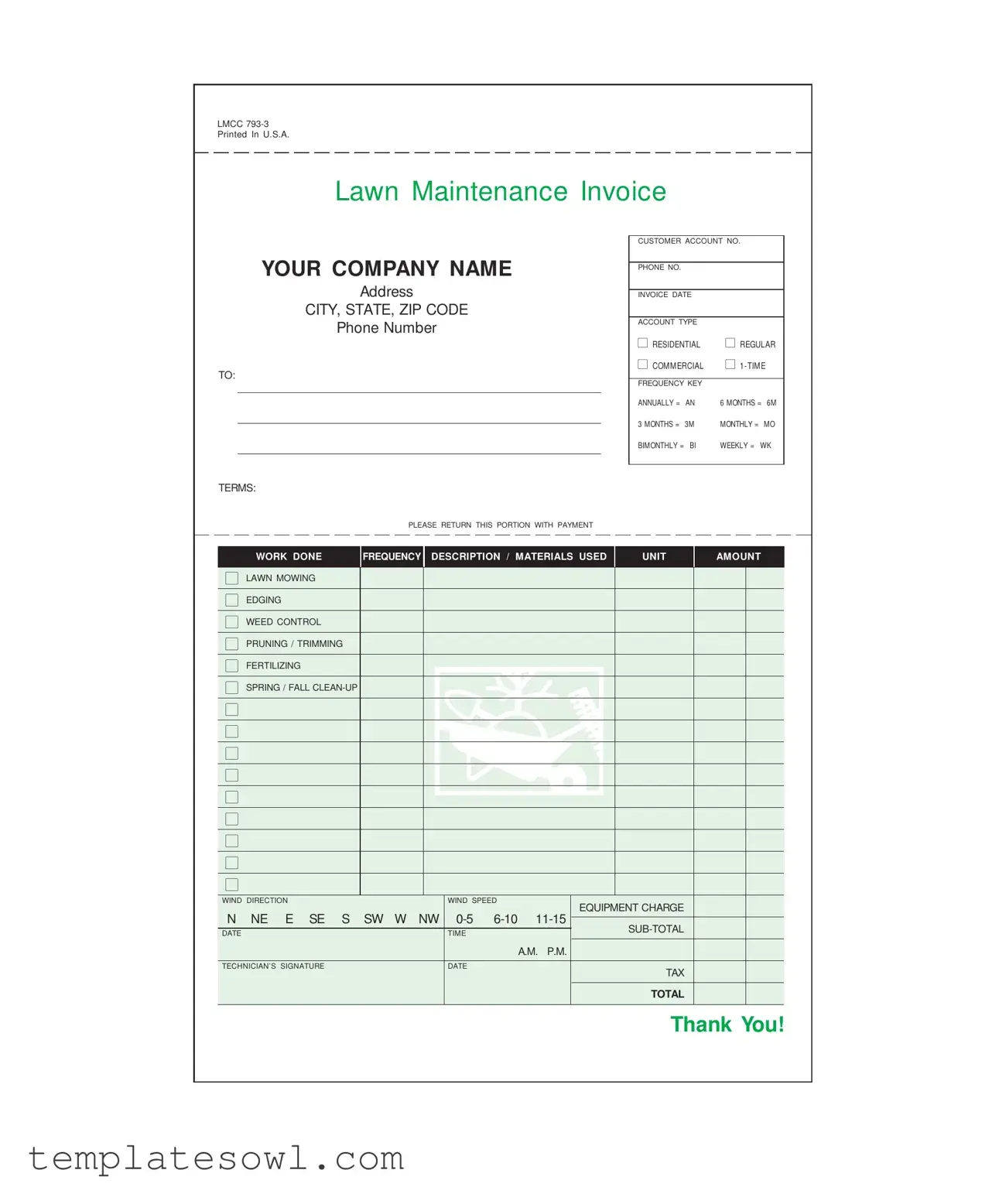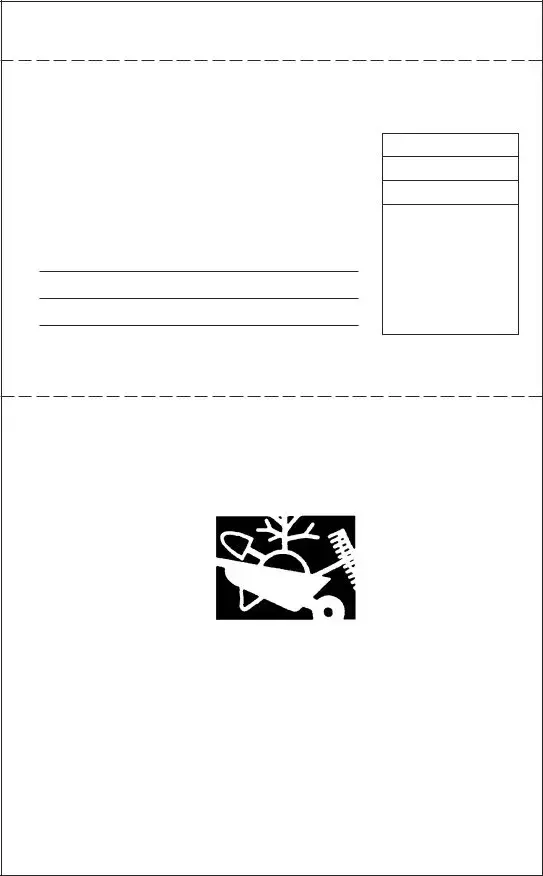What is the purpose of the Lawn Maintenance Invoice form?
The Lawn Maintenance Invoice form serves as a detailed record of services provided by lawn maintenance companies. It helps maintain transparency between the service provider and the customer. This form lays out the specifics of work performed, including types of services, frequency, and associated costs, ensuring both parties are on the same page regarding what was completed and how much is owed.
What information should be included on the invoice?
To make the invoice clear and comprehensive, it should include the company's name and contact information, customer details, and account number. Additionally, the invoice date, service frequency, and a detailed breakdown of services—such as mowing, edging, and fertilizing—are necessary. Finally, the total amount due and any applicable taxes should be clearly listed to avoid confusion.
How do I interpret the frequency key on the invoice?
The frequency key helps you understand how often the services are performed. For instance, “AN” stands for annual, indicating service once a year, while “MO” means monthly, denoting a service frequency of once a month. Each code corresponds to a specific rhythm of lawn care that the customer can expect, allowing for proper planning and budgeting.
What charges can I expect on my invoice?
It's important to examine the charges meticulously listed on the invoice. Common charges include fees for lawn mowing, edging, weed control, and more. Additionally, there might be equipment charges based on the resources utilized during service. Each line item should provide clarity on what exactly you are paying for, reducing any future misunderstandings.
Is there a specific payment procedure I should follow?
Yes, the invoice typically includes instructions for payment. It is advisable to return a designated portion of the invoice along with your payment. This portion often includes necessary information to correctly process your payment and update your account status, ensuring a smooth transaction.
What should I do if I find an error on my invoice?
If you notice an error on your invoice, it’s crucial to contact the lawn maintenance company as soon as possible. A representative can help clarify any discrepancies or make the necessary adjustments. Early communication fosters a positive resolution and reflects a commitment to transparent business practices.
How is tax calculated on the invoice?
Taxes on the invoice are often calculated based on the total of taxable services rendered. The specific tax rates can vary based on locality and state regulations. The final tax amount will be clearly indicated, ensuring that you understand the complete breakdown of your total charge. Always check if the tax has been included or added as a separate line item for accuracy.

